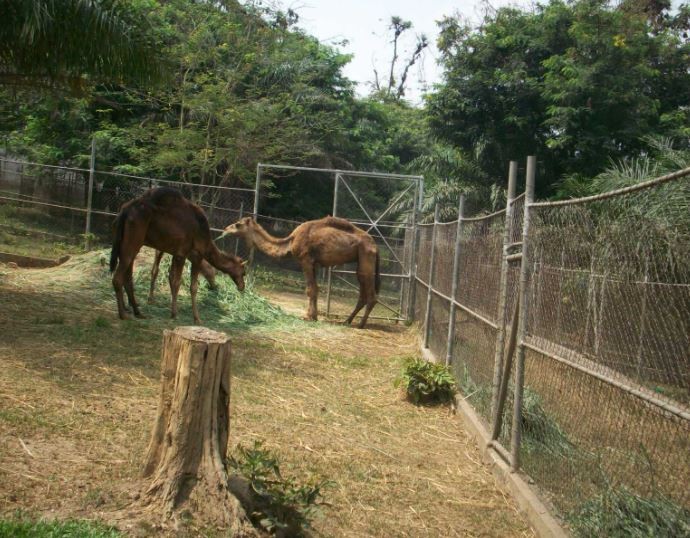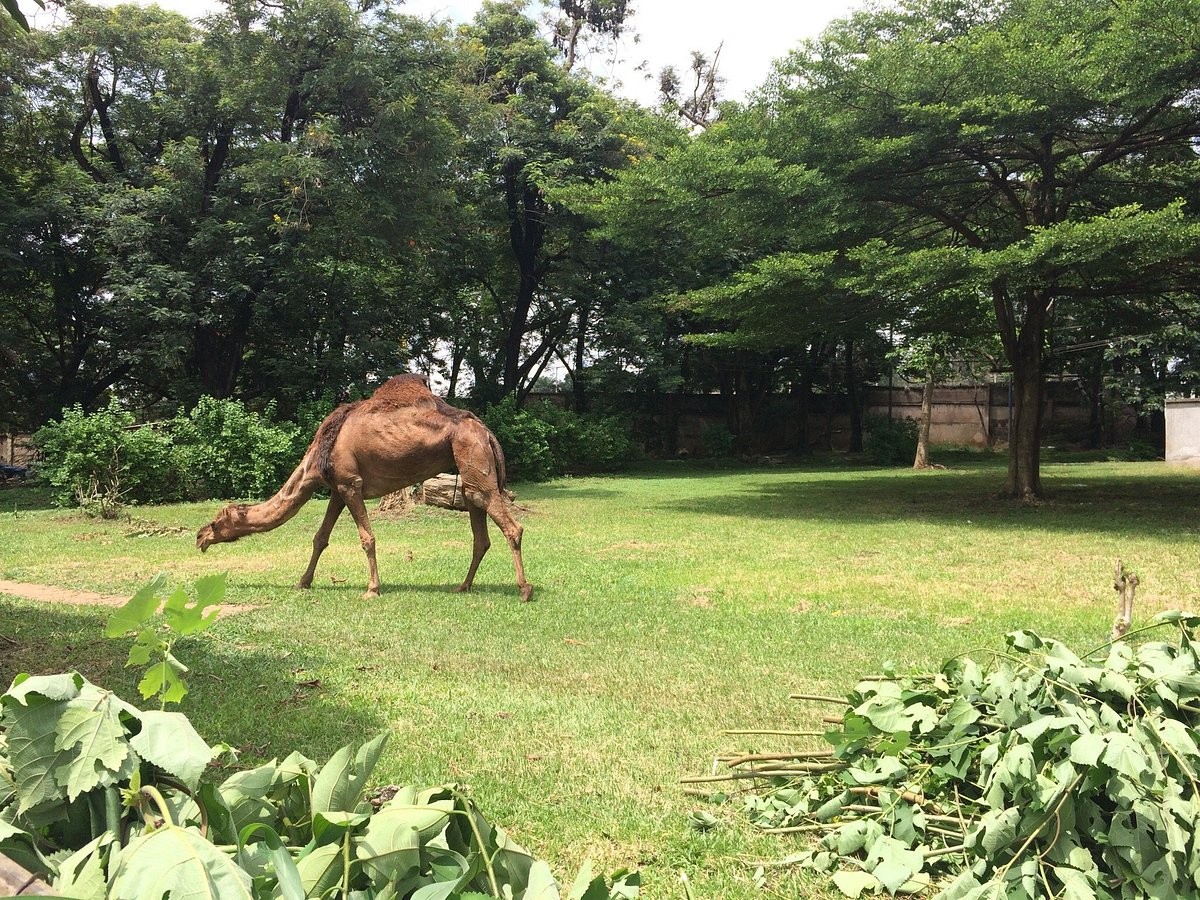Akatekyi Crocodile Pond: A Place...
September 29, 2025
Nestled in the vibrant city of Kumasi, Ghana, Kumasi Zoo presents a captivating opportunity for visitors to immerse themselves in nature and explore the marvels of the animal kingdom. Located in the heart of Kumasi, the Kumasi Zoo is positioned at a highly favourable site, providing one of the limited green spaces within the city for both local residents and visitors to enjoy. It specifically resides in Kejetia, a suburb situated in the central business area of the Kumasi Metropolitan Area. Geographically, it can be found between the coordinates of 6° 34' N - 6° 46' N and 1°30' W - 1°44' W in Ghana.
This renowned zoo, symbolizing conservation and education, is a crucial player in wildlife preservation and awareness. With its diverse range of animal species, meticulously maintained enclosures, and engaging educational programs, Kumasi Zoo is a must-visit attraction for both locals and tourists.
History of Kumasi Zoological Gardens
The Kumasi Zoological Gardens, known as Kumasi Zoo, came into existence in response to a decision made by the Asanteman Council in July 1951. The objective behind its establishment was to preserve Ashanti culture, facilitate social research, and publish journal notes concerning Ashanti customs and other topics of general interest.

In 1957, the Zoo officially opened its doors, aiming to showcase the native wildlife of Ghana within captive environments. This included indigenous animals, such as free-roaming Pea-fowls. The underlying purpose was to illustrate the interconnection between wildlife and culture, underscoring the importance of wildlife conservation.
Throughout its history, the management of the Zoo transitioned between the Kumasi Municipal Council and the Forestry Department. However, since 1974, it has been under the supervision of the Wildlife Division of the Forestry Commission, which was formerly known as the Department of Game and Wildlife.
A sanctuary for wildlife conservation
Established in 1951, Kumasi Zoo boasts a remarkable legacy of wildlife conservation. Over the years, it has become a safe haven for numerous endangered and indigenous animal species. The primary goal of the zoo is to protect these animals, preserve their habitats, and foster conservation efforts not only within Ghana but also on a global scale. Visitors to Kumasi Zoo can witness the unwavering dedication of the zookeepers and staff, who work tirelessly to maintain the delicate equilibrium of nature.

The diverse animal collection
Kumasi Zoo is home to a fascinating array of animal species, showcasing the extraordinary biodiversity found in Ghana and across Africa. Visitors can marvel at majestic lions, graceful giraffes, playful monkeys, elegant antelopes, colourful birds, and an abundance of other captivating creatures. The enclosures are thoughtfully designed to offer the animals a comfortable and natural habitat, enabling them to flourish and exhibit their innate behaviours. Kumasi Zoo prioritizes the well-being of its residents, ensuring they receive optimal nutrition, veterinary care, and enriching experiences.
Overall Functions of the Wildlife Division
The main responsibilities of the Wildlife Division encompass safeguarding, overseeing, and enhancing the nation's wildlife resources while regulating their utilization. This involves assessing and approving wildlife product exports and conducting thorough inspections and examinations before shipment. Furthermore, the division is dedicated to tapping into the economic potential of wildlife through sustainable practices such as eco-tourism and responsible utilization of wild plants and animals, including their by-products.
Additionally, the Wildlife Division strives to bolster wildlife management capabilities at the national, district, and community levels, encouraging stakeholder participation in the effective management of wildlife both within and outside protected areas. To foster a culture of wildlife conservation, the division actively promotes public awareness and understanding, garnering support for wildlife preservation. Ongoing research is also encouraged to continually improve wildlife management strategies.
Educational endeavours
Beyond its conservation efforts, Kumasi Zoo places a strong emphasis on educating the public about wildlife preservation and environmental sustainability. The zoo offers a wide range of educational programs, including guided tours, interactive exhibits, and informative presentations. These initiatives aim to raise awareness about the significance of protecting endangered species, combating poaching, and safeguarding natural habitats. Through immersive and enlightening experiences, visitors gain a deeper understanding of the interconnectedness of ecosystems and the pivotal role they play in maintaining global biodiversity.

Engagement with the community
Kumasi Zoo actively engages with the local community, fostering a sense of environmental responsibility and appreciation for wildlife. Collaborating with schools, universities, and organizations, the zoo organizes field trips, workshops, and outreach programs. These initiatives empower young minds to become conservation ambassadors and inspire them to actively contribute to the preservation of our planet's precious flora and fauna.
Kumasi Zoo stands as a beacon of hope for wildlife conservation in Ghana, captivating visitors with its diverse animal collection and unwavering commitment to education and community engagement. Serving as a vital hub for preserving endangered species and promoting environmental awareness, the zoo plays a pivotal role in safeguarding Ghana's natural heritage. A visit to Kumasi Zoo promises an unforgettable experience, allowing individuals of all ages to reconnect with nature, appreciate the wonders of the animal kingdom, and embrace their role as guardians of the environment.
September 29, 2025
September 29, 2025
September 26, 2025
September 18, 2025
September 18, 2025
September 4, 2025
September 3, 2025
August 28, 2025
August 19, 2025
August 8, 2025